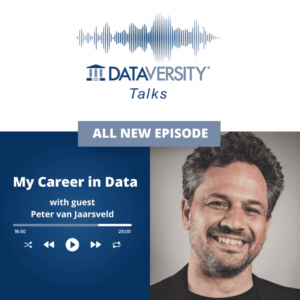Data: The currency powering the modern digital economy. In a world generating 3.5 quintillion bytes of data every day, one reality is clear – we’re surrounded by a sea of information. While this abundance of data presents immense opportunities, businesses often struggle to fully capitalize on its potential for informed decision-making and strategic insights.
Consider this. While data is perhaps every company’s most valuable asset for enabling a growth-driving customer experience, companies typically use less than half of their structured data to inform decision-making. They leverage even less of their valuable unstructured data – not even 1%.


Fewer than 15% of organizations have confidence that they’re adequately maximizing their data. Perhaps this is because significant challenges have hindered data collection, unification, and activation across organizations. IT and analytics teams have acted as gatekeepers, departments have operated in silos, and strategies remain disjointed and unclear.
This is not a new phenomenon – businesses are well aware of the challenges they face in their data strategies. They are also aware that solving their challenges is far more difficult than many have the bandwidth or resources for, and as a result many organizations have been content to piece together strategies that fall somewhere between “good enough” and “the best we can do right now.”
That may have sufficed in years past. Today, though, there is a renewed sense of urgency around the use and management of data – a call for businesses to organize, centralize, and utilize data across every department. That’s because in this new age of AI, data will play a more important role than ever before.
The Convergence of AI and Data
AI is only as good as the data it’s trained on. And while the collective knowledge AI can scrape from the internet makes it far more intelligent than any technology we’ve experienced before, homing in on data more specific to individual businesses and industries is critical when using AI for more focused use cases.
For example, you can shop online using ChatGPT to help your search. But the model can’t tell you that the product is:
- Now out of stock.
- Sized differently and runs big or small.
- Something you already own.
- Frequently purchased with a specific accessory.
This data is unique to a retailer and helps train AI to more effectively guide a customer’s shopping journey. The retail industry isn’t alone in this data specificity, either. Every industry has its own unique data points that are pivotal in training AI to better serve its customers. The key? Identifying which data points matter.
Collecting the Right Data
To enhance our understanding of customers, it’s important to shift from mindless data accumulation to strategic collection during key touchpoints in the customer experience. For example, important data could be a customer’s average purchase size, or channels where they’re most likely to engage. From there, businesses can consolidate data into a unified Customer Data Platform (CDP) or other data infrastructure and gain a comprehensive view of each customer.
Then, when a customer arrives on a business’s site or app, their data is activated by AI to offer a tailored experience based on preferences, history, and real-time customer behavior, better connecting them with what they’re seeking. This deepens B2B and B2C relationships, as buyers can trust companies to provide a more efficient, quality experience. For example, a D2C e-commerce company could ensure that customers don’t receive promotions for unavailable items, and a manufacturer could recommend only the products that a specific business uses. This streamlined approach improves customer satisfaction and enables targeted marketing, while reducing the complexity of multiple data sources.
Breaking Down Data Silos Through Collaboration
While transitioning to a unified customer view is instrumental, that is merely the first step. Fostering stronger collaboration is equally important to fully activating data-driven decision-making.
Historically, businesses have largely viewed data as an IT problem. However, many now recognize quality data as a critical asset, empowering all customer-facing roles to deliver better, more personalized experiences. The outdated thinking confining departments to data silos has begun to change, and teams must continue to unify around a customer-centric Data Strategy, pushing forward in the direction of cross-functional collaboration.
IT leaders should act as key data advisors, architects, and stewards when working with business units. Meanwhile, customer-facing teams must champion IT partnerships to convey their unique insights, simultaneously identifying opportunities to gain better control over the data they need to access on a timely basis. These shifts will foster an organizational culture of mutual understanding and accountability.
Making Data Everyone’s Solution
Getting Data Strategy right requires widespread organizational change and commitment to:
- Continuing education to make every department data-savvy
- Regular strategy reviews to ensure continued effectiveness as needs change
- Consistency – collecting feedback, monitoring metrics and refining impact-based approaches
Every company must take a step back and commit to implementing a holistic, centralized Data Strategy – bringing cross-functional teams together to collect the right data, break down silos, and activate rich real-time insights across every customer touchpoint. Only by reimagining data strategies will we unlock the transformative power of AI, in turn transforming the customer experience and creating a sustainable competitive advantage.
- SEO Powered Content & PR Distribution. Get Amplified Today.
- PlatoData.Network Vertical Generative Ai. Empower Yourself. Access Here.
- PlatoAiStream. Web3 Intelligence. Knowledge Amplified. Access Here.
- PlatoESG. Carbon, CleanTech, Energy, Environment, Solar, Waste Management. Access Here.
- PlatoHealth. Biotech and Clinical Trials Intelligence. Access Here.
- Source: https://www.dataversity.net/reimagining-data-strategy-to-unlock-ais-potential/
- :has
- :is
- :not
- :where
- a
- abundance
- access
- accessory
- accountability
- accumulation
- across
- Act
- activate
- activated
- activating
- Activation
- Ad
- adequately
- ADvantage
- advisors
- age
- AI
- All
- alone
- already
- also
- an
- analytics
- and
- any
- app
- approach
- architects
- ARE
- around
- Arrives
- AS
- asset
- average
- aware
- B2B
- B2C
- back
- Bandwidth
- based
- basis
- BE
- because
- been
- before
- begun
- behavior
- BEST
- Better
- between
- Big
- Break
- Bringing
- business
- businesses
- but
- buyers
- by
- call
- CAN
- capitalize
- Career
- cases
- centralize
- centralized
- challenges
- champion
- change
- channels
- ChatGPT
- clear
- collaboration
- collect
- Collecting
- collection
- Collective
- commit
- commitment
- Companies
- company
- Company’s
- competitive
- complexity
- comprehensive
- confidence
- Connecting
- consolidate
- content
- continue
- continued
- control
- Convergence
- could
- Creating
- critical
- cross-functional teams
- Culture
- Currency
- customer
- customer behavior
- customer data
- Customer Data Platform
- customer experience
- Customer satisfaction
- Customers
- D2C
- data
- data infrastructure
- Data Platform
- data points
- data strategy
- data-driven
- DATAVERSITY
- day
- Decision Making
- deepens
- deliver
- Department
- departments
- differently
- difficult
- digital
- Digital economy
- direction
- do
- Dont
- down
- during
- e-commerce
- each
- economy
- Education
- effectively
- effectiveness
- efficient
- either
- empowering
- enables
- enabling
- engage
- enhance
- ensure
- equally
- Ether (ETH)
- Even
- Event
- EVER
- Every
- every day
- everyone’s
- example
- experience
- experienced
- Experiences
- Face
- Fall
- far
- feedback
- First
- focused
- For
- Forward
- Foster
- fostering
- from
- fully
- Gain
- good
- guide
- Have
- help
- helps
- hindered
- history
- holistic
- However
- HTTPS
- identifying
- immense
- implementing
- important
- improves
- in
- individual
- industries
- industry
- inform
- information
- informed
- Infrastructure
- insights
- instrumental
- Intelligent
- Internet
- into
- IT
- items
- ITS
- journey
- Key
- knowledge
- largely
- leaders
- less
- Leverage
- likely
- make
- MAKES
- management
- Manufacturer
- many
- Marketing
- Matter
- maximizing
- May..
- Meanwhile
- merely
- Metrics
- Modern
- monitoring
- more
- more efficient
- most
- multiple
- must
- mutual
- my
- Need
- needs
- New
- now
- of
- offer
- often
- on
- ONE
- online
- only
- operated
- opportunities
- or
- organizational
- organizations
- Other
- our
- out
- over
- own
- partnerships
- past
- perhaps
- Personalized
- phenomenon
- piece
- pivotal
- platform
- plato
- Plato Data Intelligence
- PlatoData
- Play
- podcast
- points
- potential
- power
- Powering
- preferences
- presents
- Problem
- Product
- Products
- Promotions
- provide
- purchase
- purchased
- Pushing
- quality
- quality data
- Quintillion
- real-time
- Reality
- receive
- recognize
- recommend
- reducing
- refining
- reimagining
- Relationships
- remain
- renewed
- requires
- Resources
- result
- retail
- retail industry
- retailer
- Reviews
- Rich
- right
- Role
- roles
- runs
- satisfaction
- SEA
- Search
- seeking
- sense
- Sense of Urgency
- serve
- shift
- Shifts
- Shop
- Shopping
- should
- significant
- silos
- simultaneously
- site
- Size
- small
- Solving
- somewhere
- Sources
- specific
- specificity
- Step
- stock
- Strategic
- strategies
- Strategy
- streamlined
- stronger
- structured
- Struggle
- surrounded
- sustainable
- tailored
- Take
- targeted
- teams
- Technology
- than
- that
- The
- their
- Them
- There.
- These
- they
- Thinking
- this
- though?
- Through
- timely
- to
- today
- together
- Train
- trained
- Training
- transformative
- transforming
- transitioning
- Trust
- TURN
- typically
- unclear
- understanding
- unified
- unique
- units
- unlock
- urgency
- use
- uses
- using
- utilize
- Valuable
- View
- viewed
- we
- WELL
- What
- when
- which
- while
- widespread
- will
- with
- working
- world
- years
- you
- Your
- zephyrnet












